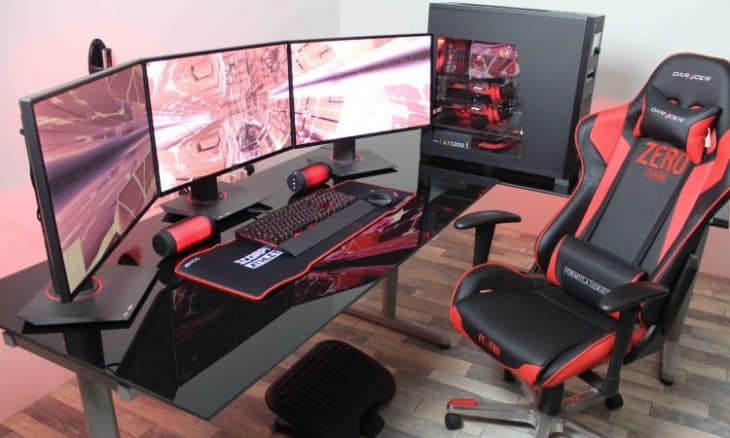Gamers rely on high-performing machines to deliver the best possible experience when they’re in the hot seat. While an out-of-the-box laptop or gaming PC can be a great option, many gamers eventually make the decision to build out their own machine. Building your own PC gives you a chance to learn more about what lies under the hood and deepen your knowledge about how computers work.
For many gamers, the process of building their very own gaming machine is something of a rite of passage. As a lot of independent work goes into building a gaming PC and you retain total control over the cost of your machine through sourcing its individual parts, it can often be more economical than buying a stock machine straight off the shelf. Not only that, but building a gaming PC allows you to customise the machine for your needs and ensure that you get the performance you need. If this is your first time building a gaming PC, it’s important that you make the right decisions from the outset to ensure everything goes as smoothly as possible.
Let’s take a look at a few key considerations you need to keep as a beginner in the build community.
Understand Your Needs
Before you begin buying parts and putting a plan in place for your build, you will need to consider exactly why you are building a gaming PC in the first place. Understanding the ‘why’ will dictate how you approach your build, so it’s crucial that you outline your personal gaming needs first.
Your aim may be to build the most powerful gaming machine possible. On the other hand, maybe you want a multi-purpose machine with enough juice to handle some part-time gaming, programming, music or video production, or even crypto mining. Understanding your needs will undoubtedly help to determine the nature of your build journey.
Choose A CPU
The CPU (or ‘central processing unit’) is the brain of your machine. Computer processors are available in the mainstream through two manufacturers: Intel or AMD. Alongside looking at the CPU manufacturer and the processor’s generation, you should also consider the number of cores the processor is equipped with, as well as its clock speed.
Core count and clock speed are two other specifications that will hold a major impact on the performance of your machine, as the more cores your machine is equipped with, the better it will be at multitasking. You can spend a lot of money on your CPU depending on its generation, so it’s important that you do your research and find a unit that will meet your computing requirements as well as keep you within your budget.
Compatibility Questions
There are countless vendors, styles and models of components that you can choose for your build. However, not all of these components may be compatible with one another, or with any software you may be looking to run once your build is complete. For example, the motherboard you choose must have the correct socket for your CPU of choice.
Overspending on a key component such as your motherboard or graphics card, could land you in trouble if the rest of your components are not as high spec and are therefore not compatible. Be sure to do your own research before buying anything, and find components that will play well together and give you the performance you’ll need from your machine.
Build Prep
Once you have all of your components purchased and ready for assembly, it’s important that you prepare an area for your build. If possible avoid carpeted floors as these can generate static that can destroy your components.
Make sure that you have all the tools that you need for the build and lay them out in your workspace so they are easily accessible. Generally, you will need a Phillips head screwdriver, pliers and a parts retriever for those pieces you drop into the case during the build.
Finally, make sure that you have good lighting so you can see exactly what you are doing. A powerful desk lamp and a head torch are good tools to have here.
Continue Tweaking And Updating Your New Gaming PC
Once you have your gaming PC built, that doesn’t necessarily mean that the build is over. This is just your first model. Over time, you can add more RAM to your gaming PC, make changes and adapt it to your needs as they evolve over time. The great thing about a self-build is that you can continue developing it so that you always have a PC that will give you the performance you need to get the most from your gaming.

